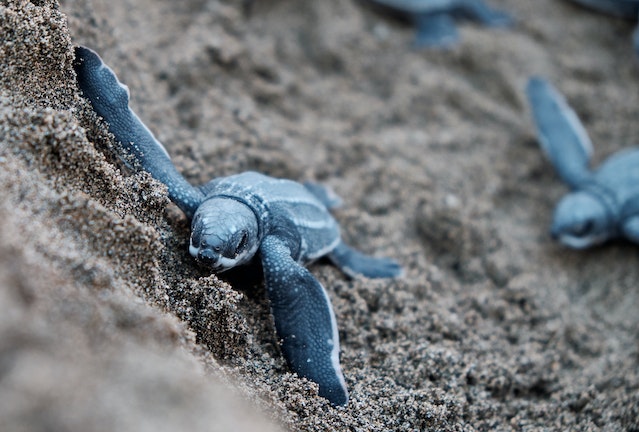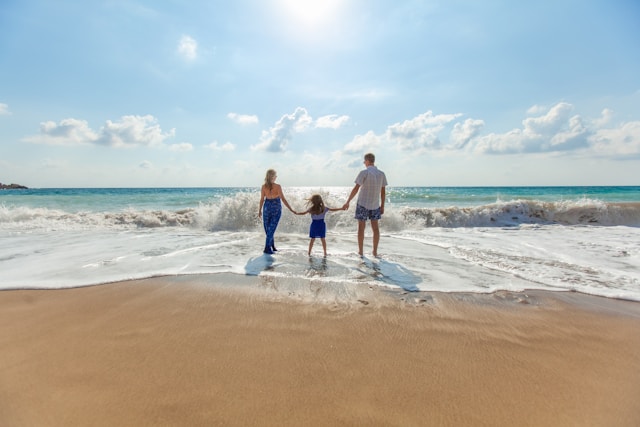Every now and then, under the cover of darkness, prehistoric-looking sea turtles lumber up busy Gold Coast beaches to nest.
Just metres from the tourist strip’s imposing high-rise towers, loggerhead and green turtles seek out just the right spot in the sand dunes and begin to dig.
After depositing their eggs, they carefully cover them over and vanish again into the sea.
The stealthy nocturnal missions are almost always unobserved so it’s perhaps no surprise that nesting frequency in the built-up Gold Coast region remains a mystery.
But a partnership between Sea World and environmental charity Watergum hopes to change that by turning regular beach walkers into sea turtle spies.
The mission is simple: look out for and report the tell-tale tracks females leave during their nesting runs and the tiny flipper marks hatchlings make when they leave their nests.
Experts say nesting on busy, urban beaches is a high-risk business so authorities need to know the location of nests to give hatchlings a fighting chance.
Dogs and other animals can dig up and eat turtle eggs. And artificial light lures hatchlings inland, away from the water’s edge.
Watergum’s Emily Vincent says the TurtleWatch program was born a couple of years ago and is aimed at identifying nest sites before they hatch.
“If walkers can spot turtle tracks before the tide washes them away that means we can identify where nests are and give them a due date,” she says.
“And if we know the due date, we can make sure volunteers are there, around the clock, waiting for the turtles to hatch and ensure their safe journey down to the ocean.”
Sea World marine scientist Siobhan Houlihan says there’s a lack of data on nesting frequency at Gold Coast beaches.
“We genuinely don’t know how frequently this is happening and that’s what we want to find out,” she says.
“Is this a trend that’s happening? As the climate changes are they moving further south, or is that we just don’t have the data and there’s always been the odd turtle nesting on our beaches.”
Two nests that were identified last year show how good intelligence can lead to successful interventions.
Adult turtle tracks spotted on Main Beach, minutes from the heart of Surfers Paradise, allowed authorities to install predator mesh over one clutch of loggerhead turtle eggs.
“Then we had our volunteers monitoring that nest. They were fortunate enough to see them emerge, and watch the little guys running down to the ocean.”
Another nest detected at Palm Beach last year was also given a helping hand, with hatchlings given a boat ride and released safely at sea after bright lights kept drawing them inland.
For more information about joining the TurtleWatch program visit https://watergum.org/turtlewatch/
Tracey Ferrier
(Australian Associated Press)





